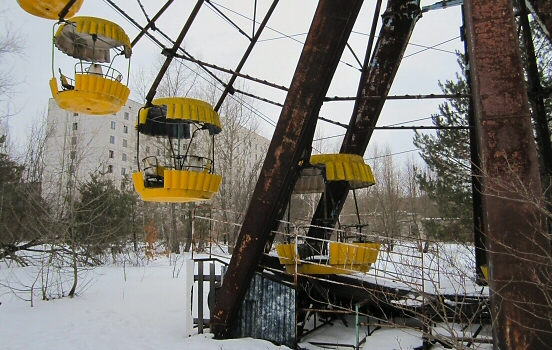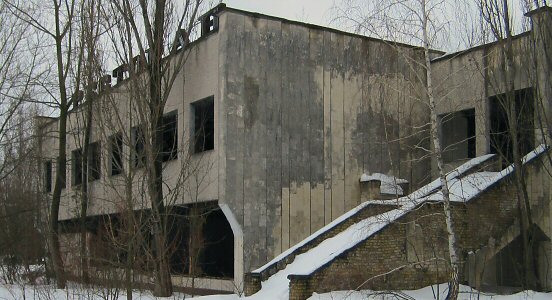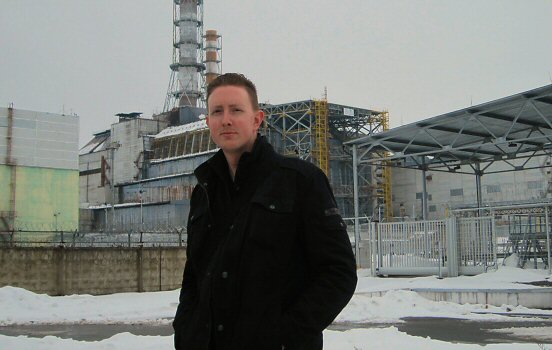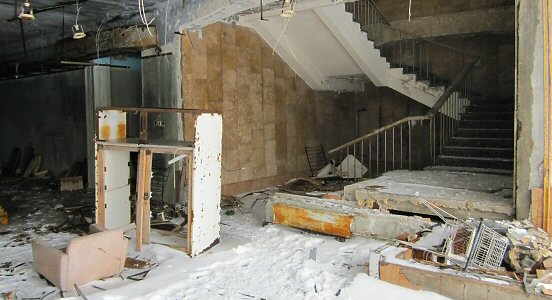It starts with a checkpoint. Grim-faced men with Geiger counters at the ready, guarding the edge of the 30-kilometer exclusion zone like it’s the gates of hell. Welcome to Chernobyl, a place where the past didn’t just linger, it exploded and then refused to die.
We drive through the Ukrainian countryside, with Radioactivity by Kraftwerk as soundtrack. The snow-covered fields roll by, quiet and desolate. There’s a surreal stillness out here, like nature itself is holding its breath.
The town of Pripyat in northern Ukraine, once a Soviet utopia built for the elite of the nuclear industry, is now a mausoleum of failed ambition. I feel a slight chill at the sight of the empty streets. Lenin Avenue is cracked and overgrown, a path lined with rusted lamp posts and broken dreams. The citizens of Pripyat were unaware at first, and the evacuation didn’t start until days later.
Trees punch through floors. Vines snake up stairwells. Nature doesn’t ask permission here, it simply reclaims.
 Ferris wheel in Pripyat.
Ferris wheel in Pripyat.
There’s an abandoned amusement park with a Ferris wheel that never spun for joy. It was meant to open just days after the disaster. Instead, it stands like a cruel joke, a frozen echo of childhoods that never happened. I walk past the Ferris wheel and see the nearby bumper cars, frozen in place like ghosts mid-chase.
Pripyat is haunting, cinematic and disturbingly beautiful in its decay. It feels like walking in a fading memory of a city. Soviet rural life locked in time.
 Abandoned building in Pripyat.
Abandoned building in Pripyat.
And then, rising like a concrete tombstone on the horizon: Reactor 4. It towers above me, ominous like Mount Doom. During a sleepless night in April 1986, it exploded during a systems test and released radioactive particles into the atmosphere which spread over USSR, northern Europe and Scandinavia. Here I stand, a hundred meters away from the beast.
 At Reactor 4 in Chernobyl.
At Reactor 4 in Chernobyl.
I visit the site with dubious emotions. It’s probably the number one on the list of dark tourism and it feels slightly awkward to visit a place of such tragic dimensions. But it is also an educational place of modern history, just as visiting the A-bomb Dome in Hiroshima, Ground Zero in New York and 2011 bomb site in Oslo.
 Remains of a supermarket in Pripyat.
Remains of a supermarket in Pripyat.
You don’t just visit Chernobyl. You confront it. The worst nuclear disaster in human history turned this patch of land into a cautionary tale for the rest of us.
“Chernobyl, Harrisburg, Sellafield, Hiroshima”
— Kraftwerk, Radio Activity (1991 remix)

Comments
No comments yet.
Leave a reply